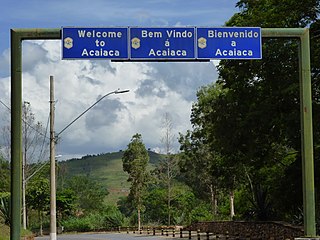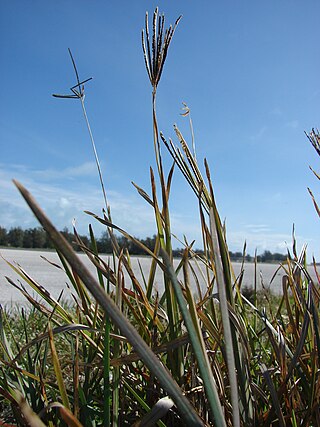
Caxias do Sul is a city in Rio Grande do Sul, Southern Brazil, situated in the state's mountainous Serra Gaúcha region. It was established by Italian immigrants on June 20, 1890. Today it is the second largest city in the state of Rio Grande do Sul. In 2020, the population of Caxias do Sul was estimated at 517,451 people, many of whom are of Italian and German descent. The demonym of the citizens of Caxias do Sul is Caxiense.

José Maria da Silva Paranhos Júnior, Baron of Rio Branco was a Brazilian noble, diplomat, geographer, historian, politician and professor, considered to be the "father of Brazilian diplomacy". He was the son of statesman José Paranhos, Viscount of Rio Branco. The Baron of Rio Branco was a member of the Brazilian Academy of Letters, occupying its 34th chair from 1898 until his death in 1912. As a representative of Brazil, he managed to peacefully resolve all Brazil's border disputes with its South American neighbours and incorporate 900 thousand square kilometers through his diplomacy alone.

The Ragamuffin War, also known as the Ragamuffin Revolution or Heroic Decade, was a republican uprising that began in southern Brazil, in the province of Rio Grande do Sul in 1835. The rebels were led by Generals Bento Gonçalves da Silva and Antônio de Sousa Neto with the support of the Italian fighter Giuseppe Garibaldi. The war ended with an agreement between the two sides, known as the Treaty of Poncho Verde, in 1845.

Eduardo is the Spanish and Portuguese form of the male name Edward. Another version is Duarte. It may refer to:

Portuguese is the official and national language of Brazil being widely spoken by most of the population. Brazil is the most populous Portuguese-speaking country in the world, with its lands comprising the majority of Portugal's former colonial holdings in the Americas.

Rio Grande is a municipality (município) and one of the oldest cities in the Brazilian state of Rio Grande do Sul. It was the state capital from 1835 to 1845. It is the most important port city in the state and has one of the most important maritime ports in Brazil.

Luiz Alberto de Vianna Moniz Bandeira was a Brazilian writer, professor, political scientist, historian and poet.

Oxypetalum is a genus of flowering plants in the family Apocynaceae, first described with this name in 1810. The genus is native to South America.

Panair do Brasil was an airline of Brazil. it ceased operations in 1965. Between 1945 and 1965, it was considered to be the largest carrier not only in Brazil but in all of Latin America.

Ângelo Moreira da Costa Lima (1887–1964) was the foremost Brazilian entomologist of his time, and his still-consulted works continue to assure his place in the history of science as the "Father" of Brazilian entomology.

Junonia evarete, the tropical buckeye or South American tropical buckeye, is a South American butterfly of the nymphalid (Nymphalidae) family. It has characteristic eye spots on the wings, which have a wingspan between 4.5 and 6.5 cm. This butterfly is easily confused with Junonia genoveva, the mangrove buckeye. Not only have the common names mangrove and tropical buckeye been confused, but the butterflies themselves have been sometimes misidentified in past literature because the two species have many variations, subspecies and seasonal forms, which makes them difficult to identify or differentiate. Phylogenetic studies demonstrate the separation of evarete and genoveva, but evidence suggests that subspecies and perhaps more species await their descriptions within this group.

Eustachys is a genus of tropical and subtropical plants in the grass family. It is native primarily to warmer parts of the Americas, with a few species in Africa and Asia.

The Constituent Cortes of 1820, formal title The General and Extraordinary Cortes of the Portuguese Nation, also frequently known as the Sovereign Congress or the Cortes Constituintes Vintistas, was the first modern Portuguese parliament. Created after the Liberal Revolution of 1820 to prepare a constitution for Portugal and its overseas territories, it used a different system from the traditional General Cortes for choosing representatives, and the three traditional feudal estates no longer sat separately. The Cortes sat between January 24, 1821 and November 4, 1822 at the Necessidades Palace in Lisbon. The work of the Constitutional Cortes culminated in the approval of the Portuguese Constitution of 1822.
Lucas Gonçalves da Silva is a Brazilian football assistant coach of Atlético Mineiro.
The 2021 Copa do Brasil first round was the first round of the 2021 Copa do Brasil football competition. It was played from 9 to 27 March 2021. A total of 80 teams competed in the first round to decide 40 places in the second round of the tournament.

Events in the year 2022 in Brazil.

Miss Grand Brazil is an annual female beauty pageant in Brazil, founded in 2014 by a São Paulo-based event organizer Gerson Antonelli, to select the country's representatives to compete in its parent international contest, Miss Grand International. From 2015 to 2023, the pageant was managed by Concurso Nacional de Beleza Miss Brasil, led by Henrique Fontes. Then the franchise was transferred to former Miss Universe Brazil organizer, Evandro Hazzy of Hazzy Top Talent, in 2024.
Miss Brazil World 2007 was the 18th edition of the Miss Brazil World pageant and 2nd under MMB Productions & Events. The contest took place on September 22, 2007. Each state, the Federal District and Fernando de Noronha competed for the title. Jane Borges of Goiânia, Goiás crowned Regiane Andrade of Santa Catarina at the end of the contest. Andrade represented Brazil at Miss World 2007. The contest was held at the Barueri Municipal Theatre in Barueri, São Paulo, Brazil.

Miss Brazil 2009 was the 55th edition of the Miss Brazil pageant. It was held on 9 May 2009 at the Latin American Memorial Complex in São Paulo, São Paulo State, Brazil and was hosted by Nayla Micherif and Renata Fan. Natálya Anderle of Rio Grande do Sul crowned her successor Larissa Costa of Rio Grande do Norte at the end of the event. Costa represented Brazil at the Miss Universe 2009 pageant. 1st Runner-Up, Rayanne Morais of Minas Gerais represented the country at Miss International 2009.

Amanda Brandão Armelau, better known as Índia Armelau, is a Brazilian former swimmer and politician, affiliated with the Liberal Party (PL). She is currently a state deputy in the state of Rio de Janeiro, being the first Indigenous woman elected to the chamber.
















